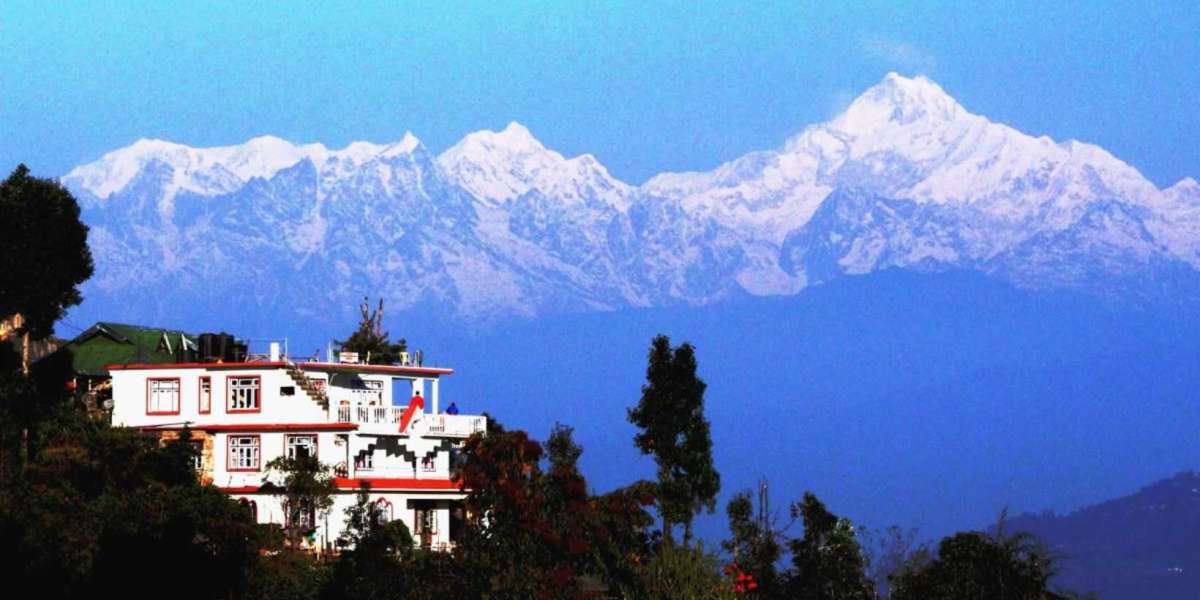Introduction
Nestled in the lap of the mighty Himalayas, Sikkim is a nature lover's paradise. With its stunning landscapes, rich culture, and warm people, this tiny state has become a favorite destination for travelers from all over the world. From snow-capped peaks to lush valleys and serene lakes, Sikkim offers something for everyone. In this insider's guide, we will take you on a journey through this Himalayan paradise- exploring its history, geography, people and culture along with top tourist attractions that will leave you spellbound. So get ready to pack your bags and embark on an adventure like no other!
History
Sikkim, the Himalayan Paradise, has a rich and varied history that dates back to ancient times. The region was once ruled by Lepchas and Bhutias until the 17th century when it became part of the Tibetan Empire.
In the late 19th century, Sikkim became a protectorate of British India after a series of wars with Nepal. It remained under British rule until India's independence in 1947 when it became an independent monarchy.
However, in 1975, Sikkim officially joined India as its twenty-second state. This marked the end of Sikkim's era as an independent kingdom and brought about significant changes in its political landscape.
Today, Sikkim is known not only for its natural beauty but also for its unique blend of cultures resulting from centuries-long interactions between various ethnic groups such as Nepalese, Bhutias and Lepchas.
Visitors can explore this vibrant history through visits to ancient monasteries like Rumtek Monastery or by interacting with locals who are proud to share their cultural heritage with visitors.
People and Culture
Sikkim is known for its diverse and vibrant culture. The state is home to various ethnic groups, including the Lepchas, Bhutias, Nepalis, Tibetans and many more. Each community has a unique set of traditions and customs that have been passed down through generations.
The people of Sikkim are friendly and hospitable towards tourists. They take pride in their rich cultural heritage and are always eager to share it with visitors. One can witness this hospitality during festivals like Losar (Tibetan New Year), Saga Dawa (Buddha Jayanti) or Dasain (Durga Puja). These festivals bring together people from different communities who celebrate them with great enthusiasm.
Sikkimese cuisine also reflects the state's diversity. Momos, Thukpa, Churpee (a local cheese), Gundruk (fermented leafy greens) are some of the popular dishes here. Moreover, visitors must try Chhang – traditional rice beer made by fermenting millet or barley grains.
The traditional attire worn by locals is fascinating too! Women wear colorful silk garments called ‘bakus’ while men don 'Gho' – a knee-length robe tied at the waist with a cloth belt called ‘Kera’. Apart from clothing and food habits; music dance also play an essential role in Sikkim's culture as each group showcases its unique style.
Sikkim’s multicultural identity brings about unity amidst diversity wherein every community has its own beliefs practices yet co-exist harmoniously fostering love for one another’s tradition within themselves thus making it truly Himalayan Paradise
Tourist Attractions
Sikkim is a paradise for nature lovers and adventure enthusiasts alike. The state has many tourist attractions that offer something for everyone. From serene lakes to snow-capped mountains, Sikkim's landscape never ceases to amaze.
One of the most popular tourist spots in Sikkim is the Tsomgo Lake. Located at an altitude of 12,400 feet, this glacial lake offers stunning views of the surrounding mountains and attracts visitors throughout the year.
Another must-visit place in Sikkim is Nathula Pass, located on the Indo-China border. It was once an important trade route between India and China but now serves as a major tourist attraction offering breathtaking views of the Himalayas.
For those seeking spiritual solace, Rumtek Monastery is a perfect destination. It is one of the largest monasteries in Sikkim and houses some rare Buddhist artifacts including wall paintings, sculptures and thangkas (Buddhist cloth paintings).
If you are interested in trekking or hiking then Yuksom should be on your list. This historic town located in West Sikkim offers numerous trails with varying difficulty levels which lead to beautiful waterfalls and viewpoints en route.
Other notable places worth visiting include Pelling, Zuluk Village, Ravangla Buddha Park and Gangtok's Enchey Monastery among others.
In summary, there are plenty of things to explore in Sikkim making it an ideal holiday destination for all kinds of travelers!
Do’s and Don’ts for Visitors
Sikkim is a beautiful state that has a unique culture and traditions. As visitors, it's important to be respectful of the local customs and follow some basic do’s and don’ts during your stay.
Do respect the environment: Sikkim is known for its natural beauty, so make sure you keep it clean by not littering or polluting in any way. Use eco-friendly products and avoid taking anything from nature as souvenirs.
Don’t disrespect the culture: The locals are very proud of their traditions, so be respectful towards them. Refrain from engaging in disrespectful behavior like wearing shoes inside temples or touching religious artifacts without permission.
Do dress appropriately: Sikkim is conservative when it comes to attire, especially near religious sites. It's best to wear modest clothing that covers shoulders and knees while visiting such places.
Don’t take photos without permission: While photography is allowed at most tourist spots, be mindful of locals' privacy when clicking pictures with them. Always ask for permission before photographing someone.
By following these simple do’s and don’ts guidelines along with mutual respect towards locals will ensure that your trip to this Himalayan paradise remains memorable and enjoyable!
How to get there
Sikkim is well-connected to the rest of India by air, rail and road. The nearest airport is Bagdogra Airport, which is approximately 124 km away from Gangtok – the capital of Sikkim. From there, you can hire a taxi or take a shared cab to reach your destination in Sikkim.
If you prefer travelling by train, the nearest railway station is New Jalpaiguri (NJP) located in Siliguri. NJP connects major cities in India like Delhi, Mumbai and Kolkata via regular trains. Once you arrive at NJP, taxis are readily available for hire that will take you straight to Sikkim.
Driving through scenic routes while enjoying picturesque views along the way could also be an enjoyable experience for adventure seekers. You can drive to Sikkim either via West Bengal or directly from Siliguri through National Highway 10.
There are also inter-state bus services available between neighbouring states such as West Bengal and Assam that connect with various towns within Sikkim. However, it's advisable to check availability beforehand due to limited frequency of these buses especially during off-seasons.
Whatever mode of transport you choose for getting there- it’s all worth it once you get a glimpse of this Himalayan paradise!
Tips for travelling in Sikkim
Travelling to Sikkim is an experience of a lifetime that you should not miss out on. To make your trip even more enjoyable, here are some tips to keep in mind:
1. Always carry warm clothing as the weather can be unpredictable.
2. Respect the local culture and customs.
3. Hire a local guide who can help you navigate through the region and provide valuable insights about its history and culture.
4. Avoid littering and maintain the cleanliness of the environment.
5. Stay hydrated at all times, especially if travelling to higher altitudes
6. Carry cash as ATMs may not be available in remote areas.
By following these tips, you can ensure that your trip to Sikkim is safe, comfortable, and memorable! So pack your bags and get ready for an adventure into India's Himalayan paradise - Sikkim!









